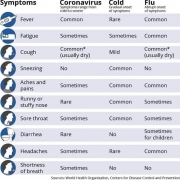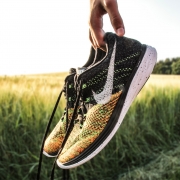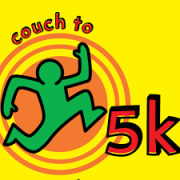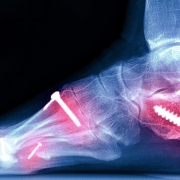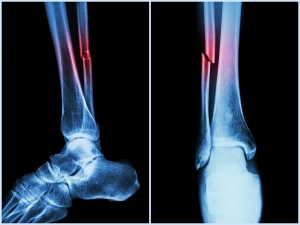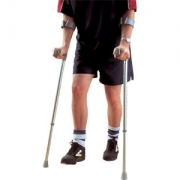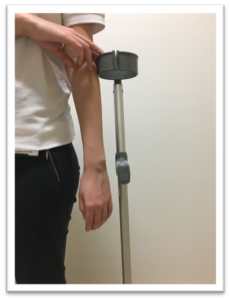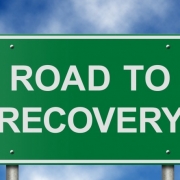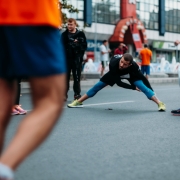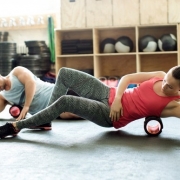When is a Runner NOT a Runner? by Pete Tang
/in Uncategorised/by Pete TangWhen is a runner not a runner?…. When they are injured! Which has been a lot for me this year!
2019 hasn’t been a great year for me injury wise and its taught me a few lessons in keeping motivated or not!
The year started so well with plans of running another marathon in Edinburgh in May. The training was going well. I’d even enjoyed a hill repeats workout. 5 Times up and down Winterbourne Hill! Sadly, things fell apart a week later when I sustained a hamstring tear in March. At that time my world was up the air. This was the first significant injury I’d had since I took up running in 2016.
I did however have a goal still in mind. The Marathon at the end of May was still in the Calendar. Physio mode took over and I set about the task of recovery and rehab with a dedication I hoped all my clients had! I sensibly took a rest period and sought the help of my physio colleagues at the clinic for treatment (the hamstrings aren’t the easiest place to get to yourself). I then started my gym routine substituting running with the cross trainer, introducing mobility exercises and strength work slowly as time went by. By week 5 I was doing 90 min stints on the cross trainer 3 times a week and the hamstring was getting stronger. I still felt like a runner, I had a running goal. I returned to running shortly afterwards – a steady 5K – no reaction. It was early April by now and the Marathon seemed so much closer, but I still fully intended to make it to the start line. My goal had shifted. The aim was now to get around rather any time in mind, after all the flight and accommodation were all booked and paid for. Plus, my wife had a place and had been training too and I didn’t want to let her down. There was still a goal and motivation to keep running.
BOOM. Injury number 2. No soon had I just returned to running I was knocked off my bike commuting home from work. Nothing too serious just a thumb injury, whiplash and a mild concussion. But nevertheless, it was another delay in the training program. The Marathon now looked like an impossibility. Arrgh! Visions of standing on the side lines, cheering on the wife and others as they ran filled my thoughts. I couldn’t think of anything worse. Travelling all that way to just spectate. My motivation was dwindling. It was while I was resting from this injury that I received an email from Edinburgh Marathon informing me that the Marathon was a sell out again this year! Great! BUT… the half marathon had spaces left. It was at that moment I knew I had a fallback plan and something to keep me motivated. With a few clicks I had rearranged things and was signed for the half… along with the wife who by now had let her marathon training slip due to lack of support from me. I’m please to say I managed to complete 2 half marathons in May despite all the odds being against me. The times didn’t matter but the achievement felt just a rewarding as my first half. Having the incentive of an event certainly helped my motivation to keep running.
Roll forward to August and BOOM, injury number 3. This time a knee issue – a tibial stress fracture with suspected meniscal tear. The main problem …. No clear goal to motivate me. 12 weeks off running was needed. My rehab mojo was running on empty by now. My knee pain was pretty severe at times. Training 4 times a week looked like a chore, if not an impossibility. Cycling (my other passion) took centre stage. The knee could cope with that. I managed a sportive, 50 miles. I rode 2-3 times a week as the weather was good. It kept things ticking over fitness wise, but the thoughts of running seemed to ebb away. I wasn’t rehabbing like before I was ticking over. I’d become lazy. No more getting home from work and throwing on the running kit. No more weekend long runs. No longer a runner. What’s more my lethargy was also affecting my wife as we weren’t motivating each other to run and the weather was getting worse, so the cycling was also taking a hit.
It was Late October and I needed to get out of the rut I was stuck in I needed some motivation. I needed a goal. It was my email inbox that again provided the inspiration I needed. We’d signed for the London Vitality Half Marathon and I’d totally forgotten about it. A reminder email arrived. Sunday 1st March 2020. Only 4 months to get fit for it. Time to test the knee. A steady walk jog and all seemed fine. A gradual 2 miles – no drama; 5K and eventually a 10K. I was getting there….. Then BOOM…
Tooth abscess… requiring a surgical incision. And yes! that’s as painful as it sounds. I felt like I’d had a spear stuck through the roof of my mouth. Pain killers, antibiotics and 2 weeks of really not wanting to exercise let alone run. But the goal was still in the achievable distance and so on a very cold Saturday afternoon I dragged myself around 5K and you know what…. I actually felt better for it! Tonight will be run number 2 and I’m heading out with the running club, another 5K.
Its fair to say its been an up and down year but I’ve certainly had my resolve tested. At times I thought I wouldn’t run again. At times I couldn’t possibly run. At times I didn’t want to run. But in the end the sense of achievement and motivation by entering an event gave me the determination to get back out there and do it. For me a half marathon was a perfect goal, challenging but achievable. Others may need a different goal. So, if you are no longer a runner but really want to be one again, think of an achievable and realistic running goal and put a date in the calendar. Then put on your trainers and take the first steps once again. If you need help and advice with injury assessment or management book up and see me or one of the team at The Physio Clinic Bristol. You can be sure of a sympathetic ear and a professional service dedicated to helping you achieve your running goals.
Pete Tang
New to running – listen to your body, not the apps. (Couch to 5k loading explained)
/in Uncategorised/by Pete TangCouch to 5k is a great way to start out running or even to get back into running after some time off. It is a program that is designed to get you from doing no running at all to being able to complete a 5km run within approximately 9 weeks. This is done with a graded training plan requiring 3 sessions per week of 30 minutes. It is based around a basic return to run program of intervals of walking and running. It starts off with lots of walking and little bits of running and progresses you up to being able to run for 5km or 30 minutes without walking. It was started as an initiative to get people more active and to make running more accessible to non-runners. Lots of different people have taken on the idea and written a couch to 5k program so there are now lots of variations available. Some are in the form of a document you can print out and others come in an app you can take running on your phone. This makes them very accessible, but it does also mean you need to exercise caution when choosing which to use. Not all programs are the same and not all programs will suit you or your training level.
We will use this as an opportunity to go through some of the things you need to consider when selecting your running program.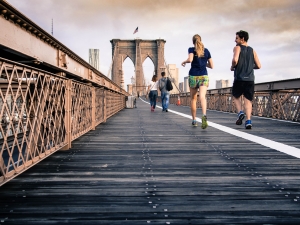
– Check ahead through the whole program before you start. Don’t get caught out by a program that seems to start gently. To get you running within the promised time scale there may be a sudden big step up in training in the middle of the program. This is a recipe for disaster if it is too sudden.
– The couch to 5k program only focuses on the running training, there is no time built in for any other strength and conditioning. Many programs barely even include a thorough warm up or cool down. You may need to jazz up your program to make it personal to your needs and to include some much needed flexibility or strengthening.
– Couch to 5k is for people who are not currently running to get into running. It assumes that you are already of a level of fitness that is able to tolerate running. It is too literal to think that you can go from couch potato to 5k runner just by following the program. To be able to stick to a running program and not get injured it is essential for your body to have some level of strength and fitness prior to starting. If you feel you may potentially fall in or near the couch potato category it is best to spend 6-8 weeks prior to starting your couch to 5k program doing some basic strength and fitness work.
– For this same reason it is not well suited to the very unfit or the very overweight. Again, a specific fitness / weight loss program of graded low impact exercise will be necessary to get you to a level that is safe to start any running program. Activities such as walking, cycling, or swimming would be a better choice of activity to start with.
– For many people it will be necessary to adapt the couch to 5k program to make it more gradual and over a more drawn out period of time. This will give you more time for recovery and for your body to adapt to the new stresses, and it will give you a better chance at achieving your goals. This can be done by simply repeating some weeks before progressing onto harder sessions; or by adding in extra rest days to accommodate recovery or other required strength and conditioning sessions.
– It is normal and common to get soreness when starting out running and after hard sessions. Doing some simple stretches and maybe using a foam roller can help you to manage this. This will be something that you have to accommodate for within your program. If you are still sore from a previous session it is not wise to keep going. Take time to recover and stretch before continuing to progress. This may be a good time to repeat some easier sessions in stead of progressing. 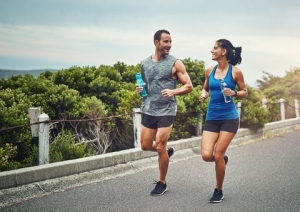
– Its ok to miss a day. Don’t let it throw you off course. And don’t try to just miss it out completely. If you start to struggle doing 3 runs per week then put more rest days in between and make sure to work on some basic strengthening and stretches on your off days. If you miss a day then pick up where you left off. It is better to set it back and prolong the program than it is to skip sections and not give your body enough time to adapt.
– being able to run 5k isn’t everybody’s goal. Some people start running as they have signed themselves up for an event and need to achieve a different distance. Others just want to be able to run and a specific distance isn’t a necessary goal. There are other companies out there that have similar plans and programs to get you running. Do some homework and pick something that is best suited to you and your goals. Some examples to check out would be ‘Jeffing’, or the ‘None to Run’ program.
Everybody is different. We all adapt and change at different rates. There is no one size fits all. Do what feels right for you and progress at your own rate. You will get there.
Fracture Recovery
/in Uncategorised/by Pete TangMany people do not realise how much of an affect a simple break can have on their ability to do daily tasks. They also commonly underestimate the amount of time it will take to return to full health. An injury that has to be immobilised, such as a broken bone, is likely to experience secondary problems, such as muscle wasting and soft tissue stiffness. This is normal after this type of injury and can be improved with some simple techniques but left untreated can cause long term problems. This type of injury does not necessarily just return straight back to normal after a splint, support or cast is removed. Quite often we find people need a little extra support from a Physiotherapist to regain full range of movement and strength in order to return to their favourite sports and hobbies. Some simple guidance and a personal exercise program can work wonders in getting you started on your road to recovery. In the meantime, here are some general tips of how to look after yourself after a fracture…
Keep mobile – movement is essential for the human body to keep healthy and feel well. It is also an important part of healing. Too much rest can add to the stiffness and weaken muscles further.
Don’t overdo it – it can take months to recover from a fracture, be patient and pace yourself. Try to avoid the cycle of doing nothing until you feel better, then overdoing it until you exhaust yourself. This can prolong the problem significantly.
Pain is normal – Your body has experienced a trauma and pain is its way of letting you know you should be looking after yourself. Pain does not occur in proportion to the injury and can last for a while after the important healing has taken place. Just because you are experiencing a lot of pain does not mean you are causing damage. Equally, if you have experienced very little pain it does not mean you are fully healed, you should still take it steady.
The Traffic Light System – see our hand out on how to monitor your body’s response to new activities. It can help you to learn to gauge your activity level and monitor our progress following injury.
Don’t be afraid of painkillers – no one really likes to have to take medication, but they are around for a reason and sometimes they are a necessary part of getting back on track. If painkillers can help you to move better and get on with daily tasks, then they will help to minimise knock on affects from moving badly.
Try to move and walk normally – whether its restriction, stiffness, pain, or fear, it is very easy to continue with bad movement habits long after they are necessary. Check how you move in the mirror or get a friend to help point out some of your new bad habits.
Returning symmetry is key – ideally we want the injured side to move as far and as freely as the uninjured side. Compare regularly to monitor your progress.
Work on strength early – even if your range of movement is limited static strengthening is possible and has been proven to help reduce pain and increase muscle activity.
Get yourself booked in sooner rather than later
The low down on using crutches
/in Uncategorised/by Pete TangPeople get given crutches for a number of different reasons. Depending on what you need them for can determine how to use them correctly.
It is also important to realise that crutches are hard work and will cause more damage than good if used unnecessarily or incorrectly. However, if you have been advised to use them by a healthcare professional, it is better to walk well by using crutches than it is to walk badly without them. If you have been given crutches by a healthcare professional they should have guided you whether they are being provided for full support to ensure you do not put weight through your leg OR that they are there just to support your normal walking. This is important to determine how much weight you should be putting through your leg and how much you should be putting through the crutches. If you are not sure then get in touch to arrange an appointment with one of our Physiotherapists, as this information is important.
In the UK the majority of people are supplied with elbow crutches.
These have a handle to put pressure through your hands and a cuff that goes around your forearm. These are most commonly measured to fit by adjusting the length so that the handle is the height of the crease of your wrist when standing with your arms relaxed down by your side. It is important to have your crutch at the correct height for you. If the crutch is too high it can cause excess stress your shoulder and neck, or worse can put you off balance. If the crutch height is too low it causes you to stoop forward and have poor posture, this can increase the stress on your wrist and hand and will negatively impact your walking pattern.
If your crutches have been provided to allow you to walk without putting any pressure on your injured leg then you will either be non-weight bearing (NWB) or will be touch weight-bearing (TWB). With NWB you do not let the injured leg touch the floor at all and all of the support comes from your arms through the crutches. If you are TWB then you can allow the toe of your injured leg to touch the floor but are not to put any weight through that leg. The weight still goes through your arms. Both of these techniques are used following some fractures or surgeries. It can be hard work to get around like this but it is necessary to protect your injury for a short period. It is not recommended to use this technique if it has not been prescribed as it greatly impacts your walking pattern.
The other use for crutches is to support your normal walking pattern whilst taking some of the pressure off. This is commonly prescribed as weight-bearing as tolerated (WBAT). This means you use the crutches alongside your injured leg, whilst maintaining a normal walking pattern, and put as much weight through the leg as pain allows. This allows you to maintain a good heel-toe walking action and a nice even stride length, which will minimise the risks of secondary problems that come from spending time on crutches. If allowed this is a much healthier way to use them. Try to keep your hands soft and your shoulders relaxed as much as possible.
To get the correct gait with crutches you should always aim to keep your crutches alongside the injured leg. The easiest and most supportive way to use them is with a ‘step to’ gait. This technique means you place both crutches and your injured leg out in front of you then take a small step with your uninjured leg so that it is also level with your crutches. This small step allows you to put minimal weight through your leg without putting too much stress on your arms. The next progression is a ‘step through’ gait, this means you step your good foot out in front past the crutches to mimic a more natural walking pattern. This will allow you to walk a little faster and more naturally but requires more balance and ankle mobility. Progress to this gait as able and increase your stride length as able as you improve.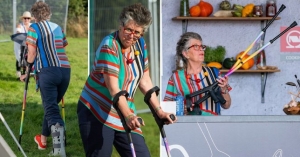
As you improve and your injury heals there will come a time when you need to progress off of the crutches and back to walking without them. This is best done gradually. Once you are able to walk with a good, even stride length with a step through gait you can gradually decrease the amount of weight going through your hands. Once you feel ready you can progress to using just one crutch. Keep the single crutch in the hand furthest away from your injured leg and try to keep your body upright. Avoid leaning towards the crutch, by this time it should just be there for balance and minimal support. When you feel you are not needing to put weight through the crutch and it seems to be getting in the way you can try walking without it. Initially, it is best to do this in and around the house and for short distances in familiar environments and to keep a crutch for longer walks outdoors. At the very least crutches are a good visual aid for others in public to not bump into you. You may find at first that you are only able to do short periods without the crutches. This is perfectly fine to do some time with them and some time without. This will allow for a gradual progression back to longer periods of walking unaided and will minimise discomfort and the temptation to limp. It is better to walk better with a crutch than it is to walk badly without. Walking should be a subconscious skill when uninjured and can take some practice to relearn. Learning to walk well again requires lots of repetition of good habits and good technique.
For help with your crutches and injury rehabilitation, book an appointment with one of our experienced Physiotherapist by calling us on 01454 540066 or booking online.
Having the surgery is the easy bit- Rehab makes the surgery as success, why choose us?
/in Uncategorised/by Pete TangHaving surgery and taking the necessary time out afterwards to look after yourself and recover is relatively simple and common sense. For many musculoskeletal surgeries however, people often underestimate the level of commitment required to do the rehab in order to ensure their surgery is a success. The initial trauma from the injury, the time spent protecting that injury whilst awaiting surgery, and the insult to the body of the surgery itself all contribute to the deterioration of the conditioning around that area. These changes can include swelling, protective muscle spasm, soft tissue shortening, muscle weakness, joint stiffness and an overstimulated nervous system. A combination of any of these will ensure that you don’t just bounce back after surgery.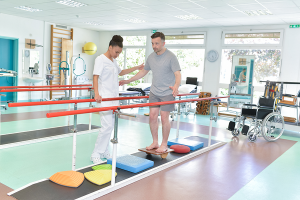
This, in part, is the body’s natural way of protecting itself following an injury and making sure you give it enough time to recover before stressing that body part again. But, left to its own devices the body’s in built protective system is rather overzealous and can greatly prolong your recovery. Recovering from an injury/surgery can also have a large impact on your mental health. This can be overtly in things like the social isolation of having to spend time off work or away from sport, or it can be more subtle in the form of apprehension of pushing the injured body part.
The mental side of recovering from injury can have a large impact on your physical recovery and can causes increases in pain and protective muscle spasm. Having a bespoke rehab program designed by a specialist physiotherapist can ensure that you know how you are going to achieve your graded return to normal life and eventually reach your post op goals. This plan and structure can be a great way to make sure you are in control of your recovery and know how to achieve each step. The team at The Physio Clinic have lots of experience at dealing with all sides of rehab of all levels. Their extensive assessment skills allow them to identify the key areas that are significant to your personal rehab needs and they can advise and guide you on how best to address these.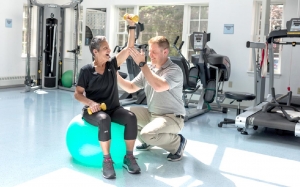
The Physio Clinic is fully equipped for all your pre and post op needs. We are based in Riverside Leisure Club and have access to their facilities during rehab sessions. This includes a fully kitted gym and 17m pool. The pool is the same depth throughout and is great for post op water-based exercises before you’re ready to jump around on land. As we are based in a gym we often have access to discounted short term gym memberships here at Riverside. This opportunity would give you the best chance at post op strengthening. Our physiotherapy staff are able to talk you through any surgeries and manage your post op expectations. The Physio Clinic also has a staff of rehab specialist that will be able to guide you in your return to full fitness, whether this is back onto the sports field or generally a busy life. Our services include physiotherapy, acupuncture, gait assessment, taping and strapping, strength and conditioning, sports massage, running retraining, Pilates, and Compex sessions.
For further information on what we have to offer check out our Therapy Services and Sports Performance tabs on our website.
What to expect when you have surgery
/in Uncategorised/by Pete TangGoing in for surgery that is not in an emergency situation is called Elective Surgery. This is pretty much any surgery that you are on a waiting list for. In physiotherapy we commonly see people before elective musculoskeletal surgery for pain management and to ensure they are as strong as possible, this makes the recovery post op a little easier. We will then see them again post op for a period of more comprehensive rehab. For many NHS musculoskeletal scans and surgeries the waiting lists can be long and using this time to educate yourself about what to expect when you have surgery and what you can do pre op to make your recovery quicker can be very beneficial.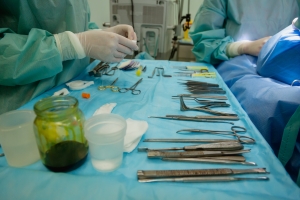
One common injury we see in clinic that gets put in this situation is an ACL tear. This is a tear of one of the ligaments within your knee joint. It is most commonly done during deceleration and twisting on a planted foot, such as in football or a fall when skiing. Often these can present in clinic as acute swelling and reduced range of movement when someone is struggling to recover from a knee injury, we then send them off on their journey of scans to confirm that it is the ACL, determine whether they have damaged anything else within the knee in the process, and to decide whether surgery is the best decision for them. If surgery is the management of choice they will then go on a waiting list and commonly return to physio in the meantime to get back on their feet and as fit as possible pre op. If you have private health cover this is also a good time to shop around and make sure you choose the best surgeon suited to your needs. Their profiles are usually available online or can be accessed by contacting your provider or the hospital you intend to use.
We’ll continue to use the ACL as an example of a surgery experience. The majority of elective musculoskeletal surgeries are being managed in hospitals as a day case, the ACL is no exception. This means you should be in and out on the same day. You should be required to attend a pre op health screening at the hospital a few days before your surgery to ensure you are fit and able for the anaesthetic. This is likely to include a review of your medical history and any medications. They will then check height, weight, blood pressure and may even require ECG, bloods or urine samples. These are all routine pre op procedures.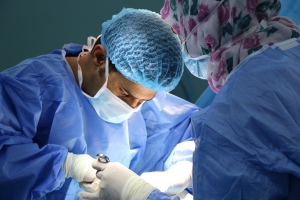
Most big surgeries will be done under general anaesthetic so this is the first bit you will go through to after you are all checked in. You will not have been allowed to eat from the night before so expect to be hungry. Once you are under general anaesthetic you are asleep, so are none the wiser, you just wake up after your surgery. Easy. You will need to achieve a post-op check-list after your surgery to be allowed home – this includes things like having something to eat, having a pee, and meeting the in house physio to make sure you can walk and get up the stairs. You are likely to still be a bit numb at this point so don’t be fooled that you’re not going to be sore. You will need to have arranged someone to take you home and keep an eye on you for the rest of the day. You should be able to get up and about at home but may be on crutches. It is common to be pretty sore and groggy for a couple of days but expect to find yourself back in the physio room to start rehab within a week or two of surgery. It is important to get stated with this early to give yourself the best chance at getting back to full fitness. It is essential to get the swelling under control and restore your range of movement as soon as possible.
You are likely to experience considerable swelling and bruising post op. The bruising should settle within the first couple of weeks but the swelling may take longer. Immediately following surgery you will be pretty stiff and sore for a few days to a few weeks and will likely experience limited mobility of your knee. This is all normal and your physio will be able to guide you with how you are progressing. Physiotherapy will initially focus on swelling management, returning your range of movement, getting you walking well, and getting your leg muscles active again. Any pain or swelling in the knee joint will cause the muscles around the knee to turn off, without the correct exercises this can slow down your progress in the early stages. Your physiotherapist will be able to guide you in which ones get the best results for you, and how to progress them when you’re ready. Just remember, you have had surgery, it is normal to be a bit sore during exercises, but this should get easier with regular daily practice. Monitoring your swelling and pain at rest can be a good indicator on whether you are pushing yourself too hard. A puffy knee is normal for a while, but if it balloons after exercise or spending prolonged time on your feet then you are overdoing it. Work within its limits.
The difference between Static & Dynamic Stretching. What to do and when
/in Uncategorised/by Pete TangEveryone gets told that they should be stretching to keep their muscles healthy and prevent overuse injuries, but it is not always clear how you should be stretching or when it is best to do. The two main types of stretching you need to be aware of are static stretching and dynamic stretching. Static stretching does exactly what it says on tin, they are stretches performed without moving. Simply, you get into the stretch position you want, make sure you can feel the stretch in the desired location, and hold that stretch for a specific length of time. Holding the position for at least 20 seconds minimum is needed for muscles to relax and begin to lengthen. Dynamic stretches, however, a
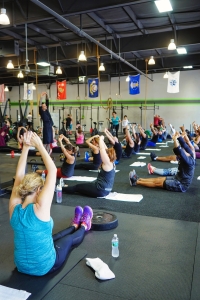
re all about movement. Moving through a series of positions that take you close to end of range. The movements are slow and continuous and none of the positions are sustained. The aim with dynamic stretching is to gradually increase the range with each repeated movement. Static stretches are good for targeting specific muscles, are safe and simple to do, are easy to do at home, and can increase flexibility and range of movement. Dynamic stretches are good for mimicking the movement of the exercise you are about to perform (done in a warmup), can increase muscle performance, can target multiple muscles groups at once, and can improve body awareness.
The science bit:
When a muscle is stretched so are the little nerve endings within the muscle fibres. These nerve endings record the change in length of the muscle and how quickly it is happening. It then sends this information to the brain via the spinal cord. A stretch reflex is initially triggered, which attempts to resist the stretch in order to protect the muscle from tearing, and the muscle contracts slightly. The more sudden the change in muscle length, the stronger the muscle contraction will be (this is why you don’t “bounce” a stretch). If the stretch on the muscle is strong and/or sustained it can trigger a different set of nerve endings within the muscle’s tendon. These nerve endings record changes in muscle tension. When the tension exceeds a certain threshold, it triggers the lengthening reaction. This inhibits the muscle’s contraction and instead causes it to relax and lengthen, allowing it to stretch further.
So, when do we use each one?
Flexibility is a term used for how far a muscle will stretch. The total length of the muscle once stretched depends on how many of its fibres lengthen. Pliability is also important, as this is how willing your muscle fibres are to stretch. This is reliant on your nervous systems response to stretch. The more fibres willing to stretch the greater the overall length of the muscle. Both are essential to gain overall range and mobility. Some research into stretching suggests that if you do static stretching before a workout you might actually have a higher risk of injury than if you don’t. It has been shown that decreases in muscle power and speed might occur after a static stretching session, which is not ideal pre exercise. This has led to some people recommending that any stretching done before exercise should be dynamic. Dynamic stretching, however, has little impact on overuse injuries, where a lack of flexibility seems to be a causative factor. These overuse problems seem to relate strongly to long-term tissue changes that don’t necessarily respond to dynamic stretching. Some say that you get more benefit from static stretching if it is done just after a workout. This is based on the idea that your muscles are warm and well vascularised and therefore more likely to be pliable. It is also thought that post exercise your muscles are tired, allowing you to more easily take advantage of the lengthening reaction mentioned above. Several articles also suggest that stretching after activity can decrease post-workout soreness. Finally, a good workout will cause some micro-trauma to the muscles and the subsequent adaption, that makes you stronger, may occur with increased fibre length when you stretch after. This means that as you gain strength, stretching after a workout can allow you to prevent the associated loss of flexibility that occurs with muscle fibre growth.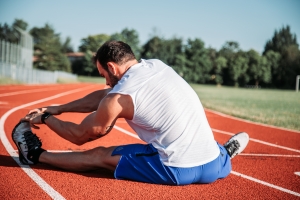
Static stretching is more likely to help with flexibility and dynamic stretching with pliability. Many deem that an active warm up including dynamic stretching before a workout and a gradual cool down and some specific static stretching after are seen as the solution. If you are just looking to dedicate some time to increasing your mobility irrespective of pre/post workouts, then you could still use dynamic stretches to warm up and static stretches to gain range. This can be done at any time of day, but they are reliant on each other so are best done together.
An example Dynamic Warm up for Running
Total time: 8-10 min.
Step 1: Start with walking at your normal pace when you leave the house. Make sure you don’t forget to warm up your arms by letting them swing with every step. Exaggerate your arm movements and allow your torso to rotate slightly.
Step 2: After 2 minutes increase your pace but remain walking and swinging your arms up.
Step 3: After another 2 minutes pull your knee’s high up towards your chest with every step. Repeat at least 10 times on each leg.
Step 4: Repeat step 3 but this time, while your knee is by your chest, lift your foot up and forward. You should feel more of the stretch in your hamstring. Bring your foot down again and repeat with the other leg. Do at least 10 times either side.
Step 5: Continue walking quickly and now kick your heels backwards, trying to move them as close to your buttocks as possible. Again, repeat at least 10 times for each leg.
Step 6: Now try to walk on your heels for 10 meters. Do this by pulling your toes up as far as you can and walking with small steps. This is designed to stretch your calf muscles.
Step 7: For another 10 meters try to walk on your toes. Make small but quick steps.
Step 8: You should start to feel warmer by now. Now, do 10 walking lunges on each side. Make sure you keep your body nice and up right, your lunge is deep, and your front knee doesn’t move forward and past your ankle.
Step 9: Finally, start a slow run or jog for 1-2 minutes and repeat the above dynamic stretches (steps 3 to 7) during this easy run. You can then slowly increase to your normal running pace and enjoy your run!
The Foam Roller and other useful self-help gadgets – what’s what
/in Uncategorised/by Pete TangFoam Roller
It’s all in the name really, it is a cylinder of dense foam that you roll around on to massage out any muscle tightness. You place the roller on the floor and the offending body part with the tight muscle on top of the roller, then using your body weight to apply pressure and the limbs not being rolled out to help move you over the roller you roll up and down. It can be pretty uncomfo
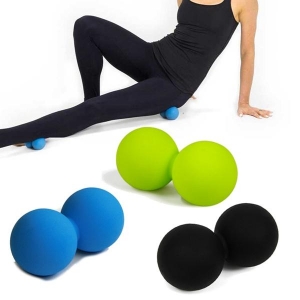 rtable to start off with but if it is used with a manageable amount of pressure, and regularly, you can really start to feel it working and it becomes less torturous. If you are new to exercise you can build some pretty good upper body and core strength just from trying to move yourself around over the roller.
rtable to start off with but if it is used with a manageable amount of pressure, and regularly, you can really start to feel it working and it becomes less torturous. If you are new to exercise you can build some pretty good upper body and core strength just from trying to move yourself around over the roller.
Massage Ball
These come in all different sizes and textures. They can be used in a similar way to a foam roller or even used up against the wall or on a hard chair. They are great at getting into smaller, more specific areas than the foam roller such as glutes and around shoulder blades. You can also use a ball for some areas with just the pressure of your hand – such as rolling it over forearms. It can be great for massaging the soles of your feet too, just place it on the floor and roll a bare foot over it.
Tip: using them up against the wall is nicer and easier to manipulate than on the floor. Place the ball in a long sock or pair of tights and throw it over your shoulder – that way you have a good handle on it to keep better control and stop it from falling.
Another tip: any firm ball will do – tennis ball, lacrosse ball, squash ball, golf ball, even a decent dog ball – they all have their uses when it comes to self-massage.
Compex
This is an electrical device that you can rent or buy for home use. It can also be used to compliment your gym sessions. It is an electrical muscle stim machine that uses low level electrical currents to simulate your muscles. The Compex machine has many different settings and can be used for strengthening, improving circulation, post exercise recovery, and pain management. We have got several machines available to rent on a monthly basis from The Physio Clinic and you are able to purchase a Compex machine from us. For more information call 01454 854466.
Massage Gun
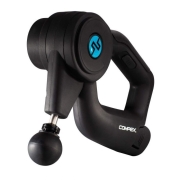
Not as scary as it sounds. Massage guns come in a variety of sizes now from more industrial heavy duty (we have 1 in clinic, come and have a try!) to lighter more compact travel options. A firm massage head, usually in the shape of a ball about golf ball size, moves in and out of the massage gun at high speed, providing targeted massage to areas of tension or soreness. This targeted approach allows you
to have complete control as to how much pressure you use, working to increase blood flow, improve range of movement and reduce soreness.
Peanut Ball
This is a peanut shaped ball, again they come in varying sizes. Some people find these easier to use as they are less inclined to roll away and can be easier to keep control of. They are also great to get down either side of your spine without putting too much pressure on the bony bits in the center of your back. They are used in the same way as a foam roller or massage ball.
Tip: taping 2 tennis balls together can be a great homemade version to trial.
Massage Stick
If rolling around on the floor isn’t really your style then a massage stick is a great alternative.
They can be great to apply pressure to areas that you can’t quite get to with a ball or foam roller, or that needs a bit more precision to pin down the right muscle. They require you to use your hands on either end of the stick to apply pressure and direction and work similar to a rolling pin. Tip: you can actually just use a rolling pin
All of the above gadgets vary in size and material. They range from smooth and fairly soft for a more gentle approach to knobbly, spikey hard plastic for a more intense experience.
They all work on the idea that the smaller the surface area you are working with the deeper you will get into the tissue. If you choose a small hard ball to roll on you will be able to work deeper into the tissue, but done too soon this may be too uncomfortable. It takes time and repetition to loosen of muscle tension and needs to be done gradually. Many people who find this kind of self-treatment beneficial will start with what’s manageable and progress to something more intense as their muscles get looser.
Trigger Point Stick
This is a specially designed stick to help you apply pressure on those hard to reach trigger points around the backs of your shoulders. It can also be used on other areas too. It is a big long S shaped stick with nodules on and the specially designed shape makes it easy to apply pressure to those hard to reach areas with minimal effort.
Tip: A homemade version of this can be to use the top of a hooked walking stick or a curved umbrella handle.
If there is any area of your body that you think would benefit from some regular self-massage but are finding that the above gadgets are not hitting the spot then have a shop around online – someone will have invented something. These are just an example of the most mainstream and versatile gadgets that we commonly find ourselves recommending to patients.
3 things to take with you on a ski holiday
/in Uncategorised/by Pete TangThe best things to take on holiday are small and light and easy to pack. Here are some ideas of things to take on a ski holiday with you that will aid your recovery and keep you more comfortable.
Spikey ball / tennis ball – using a ball for self-massage is an age old trick that really works. Placing a ball against a wall or on the floor and leaning the area of your body against it that needs loosening off will allow you to easily apply pressure. Then all you need to do in move around in small back and forth or circular movements to help loosen the muscles. If you are using it up against the wall and are finding it hard to keep control of the ball try putting the ball in a ski sock so you have something to keep hold of.
Massage stick – a massage stick is similar to a rolling pin and is again a great tool for self-massage. Unlike a foam roller or a ball you use your hands on the handles of the roller to apply pressure. Make sure you invest in one that you enjoy using and find beneficial. They come in many different styles and some are more brutal than others. Choosing the right one is down to personal preference. They can be used against the skin or over thin, close fitting clothing.
Compression bandage – using compression after an acute injury is a great way to minimise swelling and aid recovery. Put the bandage on over the injured area as soon as possible after the injury. Make it nice and tight but don’t cut off blood supply! A compression bandage can also be used as a simple joint strapping to support a sore joint in order to be more comfortable exercising. If you pick up a small niggle when away skiing the bandage can be used to support the area for a short time until you get home to have it checked. Don’t be fooled into thinking that it will enable you to continue skiing if you’ve done a proper injury though, it may just make you a bit more comfortable moving around until you get home.
Bonus: Ice packs are not on this list as getting your hands on a freezer on holiday is not always easy … and you are on a ski holiday and hopefully surrounded by lots of nice deep snow! Ice is great at aiding recovery after intense exercise. Keep your salopettes on and go bury your legs in the snow, once you feel the cold starting to come through to your skin stay put for 10 minutes. If you get a minor injury that would benefit from ice you can also take a plastic bag out and gather some snow. Fold the bag to prevent leaks and wrap it in a towel – a homemade ice pack. Icepacks can be used for about 10 minutes at a time as regularly as needed after a fresh injury to help minimise acute swelling. Keep checking your skin to make sure you do not get a burn or blister – it is likely to be red from the ice but if you press it it should go pale and quickly return to red, if this doesn’t happen or it looks mottled or discoloured then remove the ice and give your skin time to warm up and recover before using it again.
Get in Contact
We understand that people often don't know what we do or how we can help. Don't worry we're here to help.
To ask us a question or to book an initial appointment simply call 01454 54 00 66 for our Bristol Clinic or 01291 76 99 66 for our Chepstow Clinic and one of our friendly team will assist you with your enquiry.
Alternatively, please fill in the form on the Contact page.
Search the Website
Testimonials
"This was the first time visiting a sports massage, needed due to an injury to my calf. After just 1 session the improvements made have been incredible, and I am already booking more sessions in immediately. Matt Williams, who looked after me, was very friendly and extremely Knowledgeable..."
- Matt Lansdown

